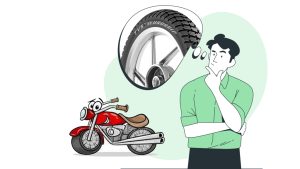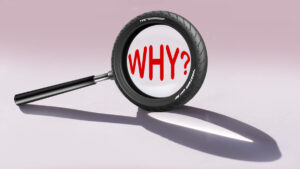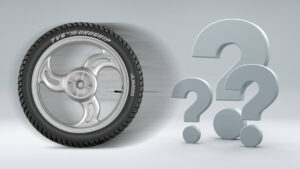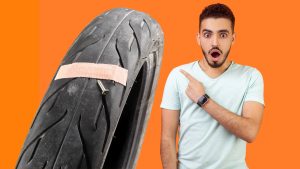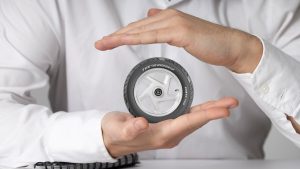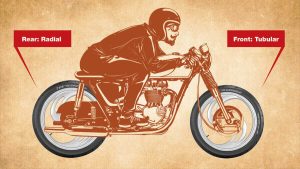We know how fun it is to ride in rain, but wait, before we head out into the rain, here are four things to keep in mind.
1. Tyre air pressure
There’s a misconception that under – inflating tyres leads to increased wet road performance. Under inflation affects braking power and handling, both of which can cause the tyre to slip on wet roads. Under inflation also reduces fuel efficiency and tyre durability in both dry and wet conditions. On the other hand, over inflation reduces the size of the contact patch, which increases the chances of a slide.
That’s why it’s important to set the tyre pressure to the manufacturer recommended levels. You can find these ratings on some part of your motorcycle like the tank or swing arm, or in the owner’s manual, or do a simple Google search.
2. Tread Depth
The next thing to check for is the tread depth. A tyre is able to hold on to the tarmac because of the rubber. So in dry riding conditions, the higher the contact patch and stickier the rubber, more is the grip that’s available. So ideally, we should be having completely smooth and round tyres.
If a tyre were to be completely smooth, at even moderate speeds it can glide over water. And that takes away all control from the rider leading to a crash. And that’s where the treads play a major role.
Treads are baked into the design of a tyre to perform the main function of removing water from the centre and exhausting it out to the sides.
Treads are also made to give extra traction in knobby tyres, but that subject is for another day.
If road grip was dependent only on the rubber compound, we could virtually use it till the steel wires would show.
But that’s not the case. There has to be a minimum amount of tread depth left for it to be safe and usable. That minimum depth is marked by the tread wear indicator.
Tread Wear Indicator is this tiny rubber protrusion within the grooves. If the tread thickness is close to or has reached the level of the indicator, it’s time to get new tyres for your bike!+
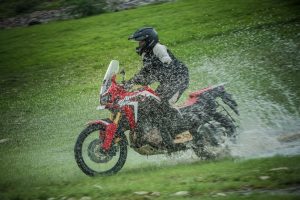
3. Cracks on sidewall
The third thing to check for is cracks on the sidewall. These should be easily visible under good lighting. If you find some cracks, try applying some Tyre polish on it. The polish can act like a moisturiser and bring some ‘stretch’ back into the rubber.
4. Uneven wear
If you find signs of uneven wear, it’s not really possible to treat it, even if the tread depth is available. Uneven wear can happen due to a wide variety of reasons, the number one being improper tyre pressure.
So, if the tread thickness is low, if there are too many cracks on the sidewall and if there’s uneven wear, it’s time to look out for a new set of tyres. If there’s any season that demands highest attention to tyre health, it’s the monsoons.
To sum it up, what you need to keep in mind while riding in the monsoons is the tyre pressure, tread depth, cracks on the sidewall and uneven wear.


